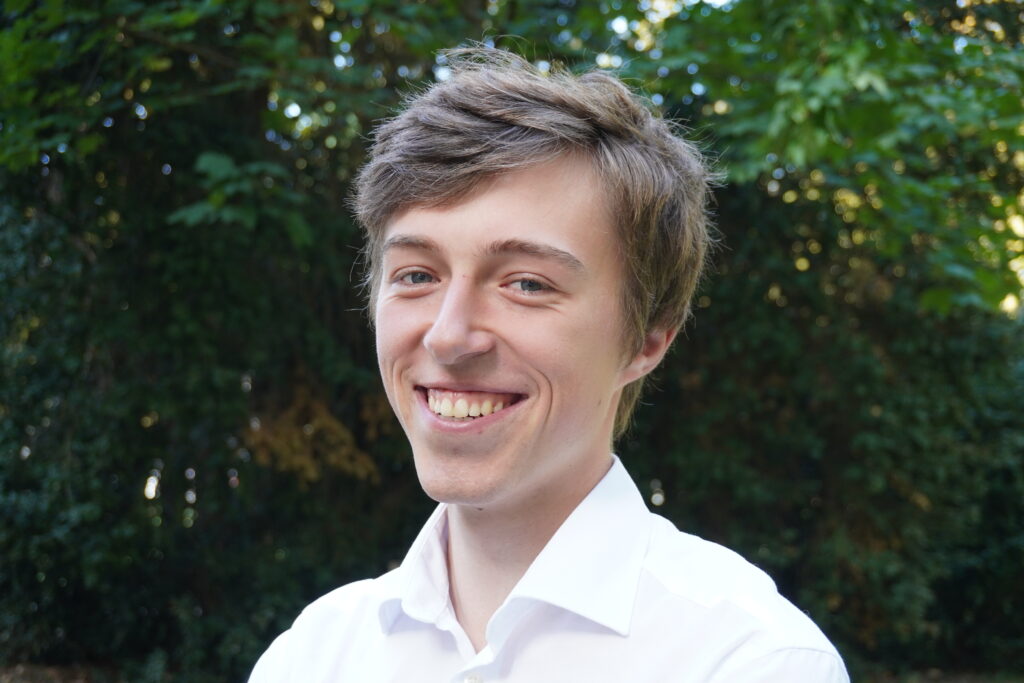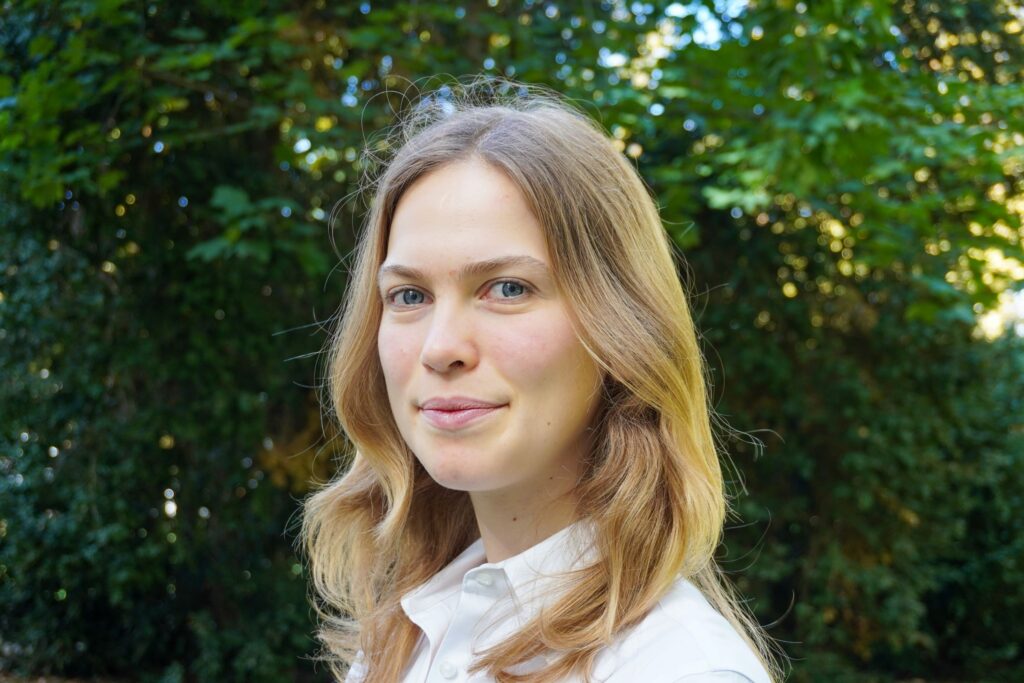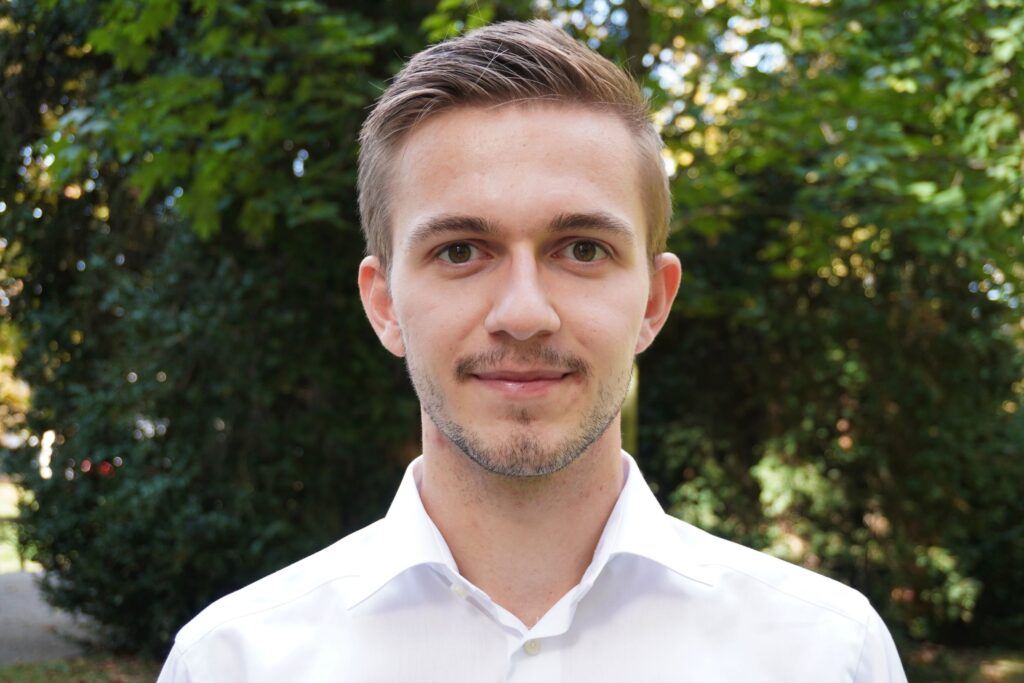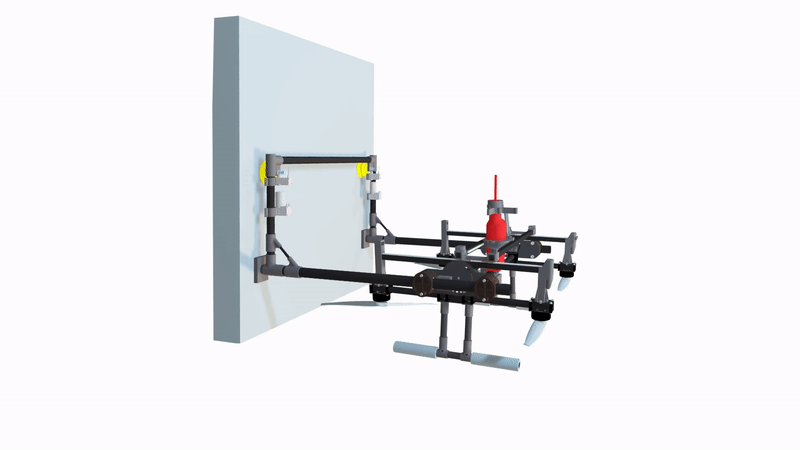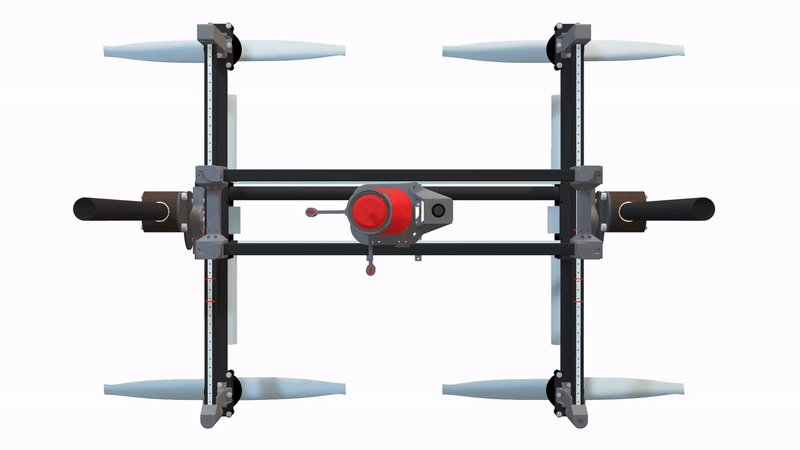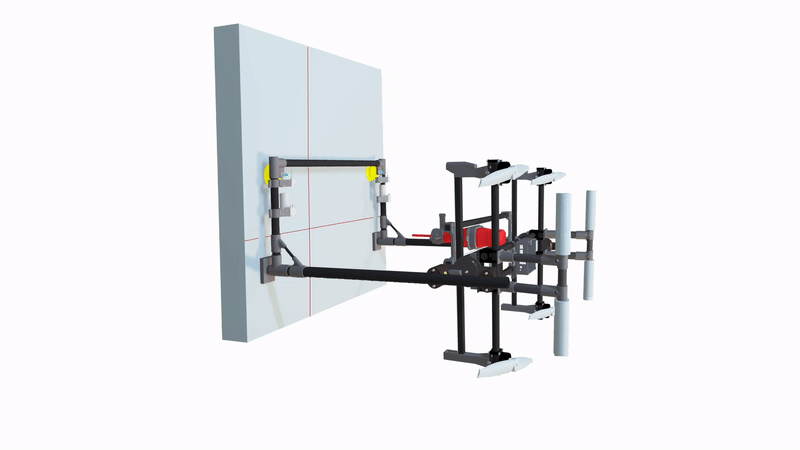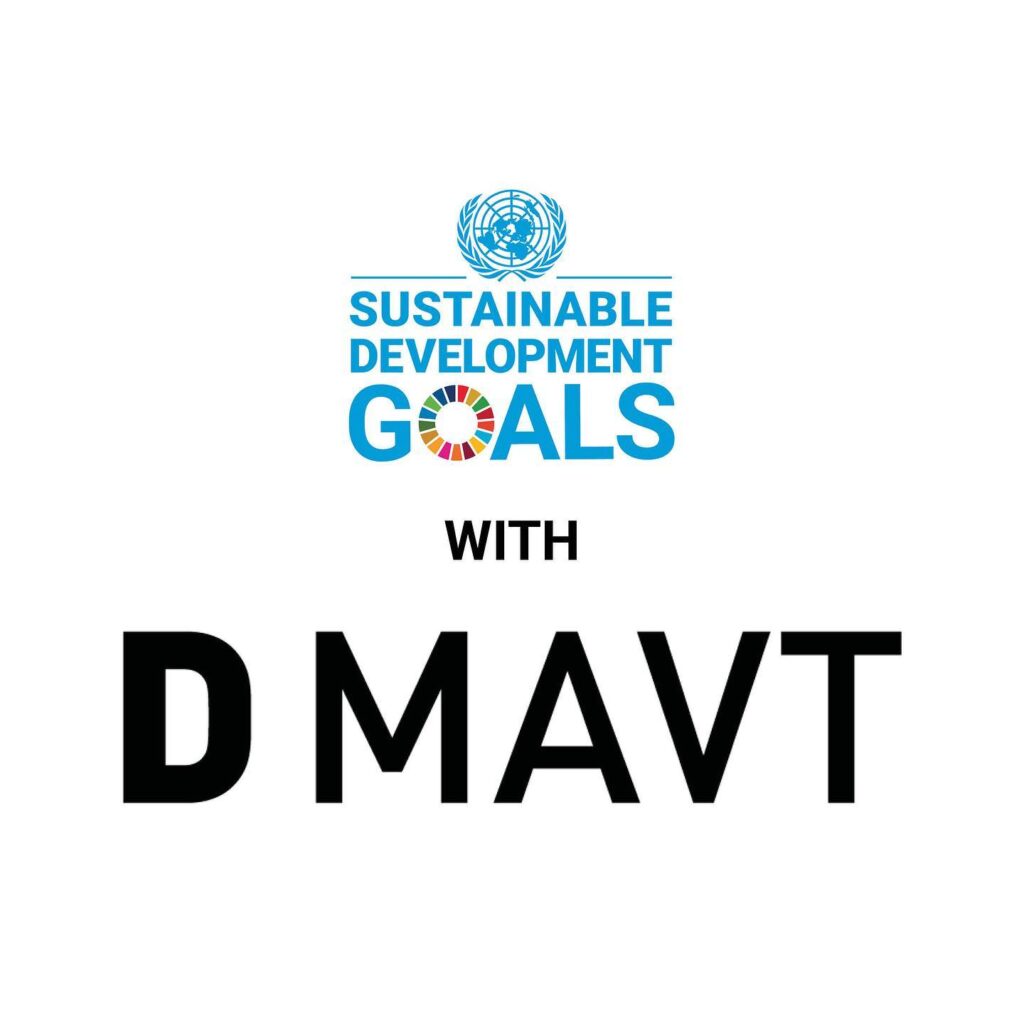A lightweight attachment system holds the quadcopter on the wall. Flexible suction cups comply with imperfect surfaces and seal small gaps. They are actuated by membrane pumps, allowing for rapid and solid attachment. For controlled detaching an electromagnetically driven valve provides an additional orifice.
In order to exert the required drilling force AITHON has to rotate its thrust by 90°. These positions can be locked with a actuated locking pin. In addition it can slide along the L-Arm with linear friction bearings to move in the drilling direction.
The lightweight “Drill Positioning System” is integrated at top of the multicopter. Two motors drive a toothed belt to position the hammer drill with millimetre precision in a square of 60×60 cm. Feedback to the operator is provided with the help of an integrated camera and two line lasers. The structure is designed to drill holes up to 10 mm in diameter with drilling forces of up to 150N. The hammer drill can also be replaced in a modular way by other tools.
Currently a modified version of the Hilti hammer drill TE 2-A22 is mounted, it is able to drill holes in concrete from 4 to 12 mm. Therefore a force of up to 120 N is applied. Due to the modularity this tool can also be replaced by a milling or anchoring machine or any tool which applies forces to the wall.
The body is the intersection of all system of the quadrocopter. It is extremely light weight and customizable for different demands. To propel the quadrocopter the latest Swiss made drone propulsion system was chosen.



